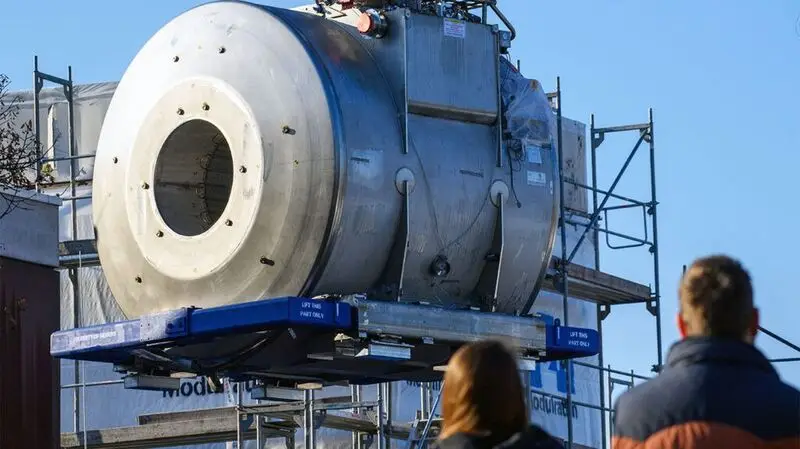
- Alzheimer’s disease, the most common form of dementia, affects around 7 million people in the United States alone.
- It is a progressive disease that gradually affects memory, thinking and behavior, for which there is currently no cure.
- New research suggests that Alzheimer’s happens in twi distinct stages: A slow phase with no symptoms, in which only a few vulnerable cell types are affected, followed by the destructive later phase, when the characteristic signs and symptoms of Alzheimer’s are seen.
- The findings may help researchers develop new ways to diagnose and treat Alzheimer’s disease early in its development.
Alzheimer’s disease is the most common form of dementia — a progressive neurological disorder that affects memory, thinking and behavior, eventually interfering with daily life.
According to the
Alzheimer’s generally starts with mild memory loss, and the symptoms worsen over time. People in the later stages of Alzheimer’s lose the ability to carry on a conversation and perform simple daily tasks, often needing round-the-clock care.
Symptoms are caused by changes in the brain, but new research has now found that some brain changes may begin long before any symptoms are seen.
The study, funded by the National Institutes of Health (NIH), suggests that the first slow, silent phase of Alzheimer’s occurs before any memory loss, with damage to just a few vulnerable cells in the brain. The second phase, which coincides with the development of symptoms, is more destructive and is characterized by the accumulation of
The research appears in
Igor Camargo Fontana, PhD, Alzheimer’s Association director of scientific conference programming, who was not involved in this study, told Medical News Today that:
“Alzheimer’s disease has a long pre-symptomatic period; Alzheimer’s-related changes take place in the brain 10, 15, even 20 years before the onset of memory and thinking symptoms. This new paper may contribute to how these changes are understood. Only time will tell.”
The researchers analyzed brains from 84 donors (postmortem), with a mean age of death of 88 years. Of the donors, 51 were women and 33 men, 9 had no Alzheimer’s, 12 had low Alzheimer’s disease neuropathological changes (ADNC), 21 intermediate and 42 high ADNC.
Almost three-quarters (31 of 42) of high ADNC cases had dementia before death, as did one-third of the intermediate (7 of 21) and low (4 of 12) ADNC cases. None in those with no ADNC had dementia before death.
The researchers first used machine learning to quantify the progression of Alzheimer’s disease, including pTau — referring to levels of phosphorylated tau protein in plasma, a blood component — and
Each was allocated a score between 0 and 1. The researcheres found that a score of 0.4-0.6 was when pTau and beta-amyloid accumulation increased dramatically and cognitive deficits increased.
From the scores, they worked out that the severity of Alzheimer’s could be clearly defined in two phases:
- an early phase where there were low levels of pathology, together with some evidence of neuronal loss and early amyloid pathology, but no cognitive effects
- the later phase, where there were markedly increased levels of Alzheimer’s pathology, neuronal loss and cognitive impairment.
“The ability to detect these early changes means that, for the first time, we can see what is happening to a person’s brain during the earliest periods of the disease,” he suggested.
In the early phase, alongside a slow accumulation of plaques and activation of the brain’s immune system, the researchers were surprised to find that one particular type of neuron, or nerve cell, was dying.
These somatostatin (SST) inhibitory neurons usually send calming signals to other cells. The study authors suggest that the loss of these neurons might trigger the subsequent brain changes that underlie Alzheimer’s.
“The authors highlight that a specific brain cell type — the inhibitory neuron — might be one of the earliest to become vulnerable and trigger changes in the communication between brain cells. These cells are mostly located in a brain region that is associated with memory, vision and language.”
– Igor Camargo Fontana, PhD
Following the loss of SST inhibitory neurons, the authors noted that there was an increase in inflammatory cells called microglia and astrocytes, as well as a loss of oligodendrocytes.
Oligodendrocytes produce
“The authors propose that, in what they are calling the disease’s later phase, other brain cells associated with inflammation, called microglia and astrocytes, initiate a process to try to counteract these initial changes by releasing molecules or changing their form,” Fontana told MNT.
“Alterations in inflammatory cells and inhibitory neurons slowly evolve to demonstrate the well-known biological changes of Alzheimer’s, including the accumulation of amyloid plaques and formation of tau tangle pathology, culminating in a terminal state,” he added.
Powerful new technologies allowed researchers to detect the earliest cellular changes in the brain as Alzheimer’s develops. The study authors hope that their findings may lead to new diagnostics and treatments targeted at specific stages of the disease.
Welcoming the findings, Fontana added that the Alzheimer’s Association is funding several related studies.
“The disease’s long presymptomatic period creates opportunities for early detection and early intervention/prevention of dementia symptoms,” he told MNT.
“If the findings in this new paper are confirmed by other labs, it raises the question of whether effectively addressing the brain changes that happen in what the authors call the first ‘quiet’ phase can slow, delay or prevent the second, more destructive phase,“ Fontana added.
“It will be important to evaluate the ‘quiet’ phase using a combination of diagnostic tools, and further investigate its associations with biomarkers of Alzheimer’s, such as amyloid and tau,” he emphasized.





